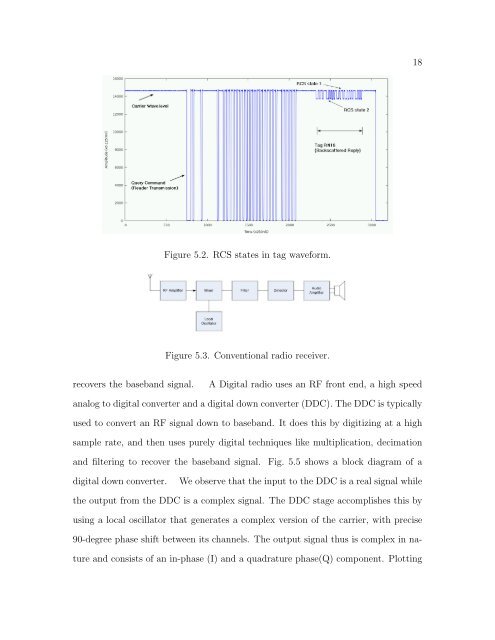utilizing physical layer information to improve rfid tag
utilizing physical layer information to improve rfid tag
utilizing physical layer information to improve rfid tag
You also want an ePaper? Increase the reach of your titles
YUMPU automatically turns print PDFs into web optimized ePapers that Google loves.
Figure 5.2. RCS states in <strong>tag</strong> waveform.<br />
Figure 5.3. Conventional radio receiver.<br />
recovers the baseband signal. A Digital radio uses an RF front end, a high speed<br />
analog <strong>to</strong> digital converter and a digital down converter (DDC). The DDC is typically<br />
used <strong>to</strong> convert an RF signal down <strong>to</strong> baseband. It does this by digitizing at a high<br />
sample rate, and then uses purely digital techniques like multiplication, decimation<br />
and filtering <strong>to</strong> recover the baseband signal. Fig. 5.5 shows a block diagram of a<br />
digital down converter. We observe that the input <strong>to</strong> the DDC is a real signal while<br />
the output from the DDC is a complex signal. The DDC s<strong>tag</strong>e accomplishes this by<br />
using a local oscilla<strong>to</strong>r that generates a complex version of the carrier, with precise<br />
90-degree phase shift between its channels. The output signal thus is complex in na-<br />
ture and consists of an in-phase (I) and a quadrature phase(Q) component. Plotting<br />
18
















